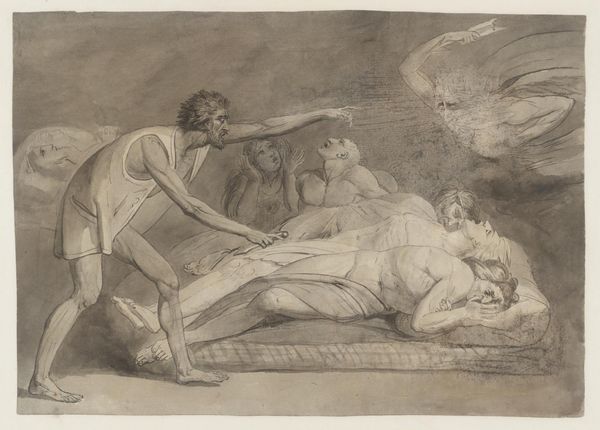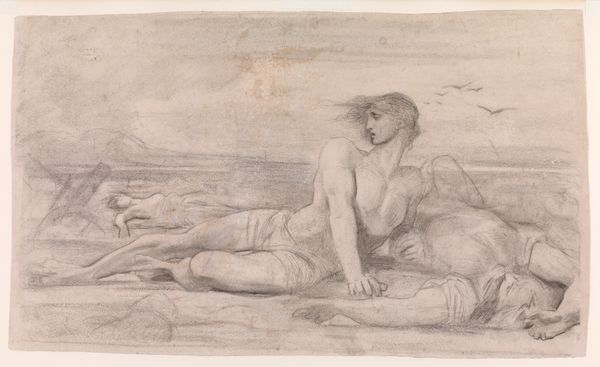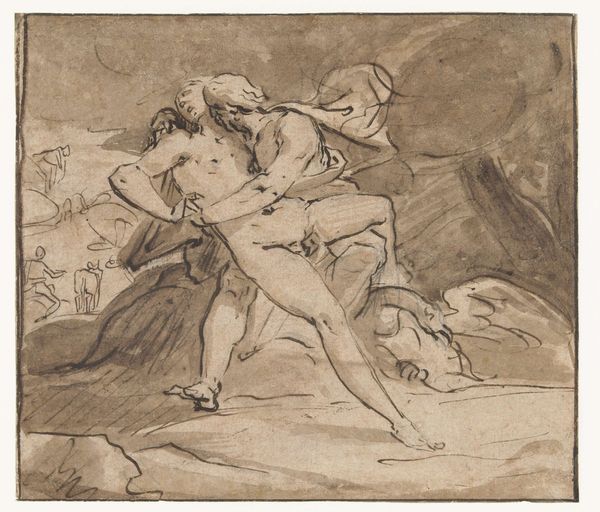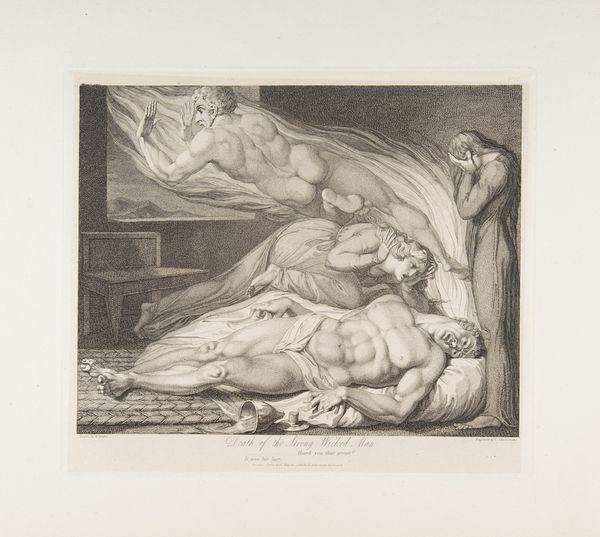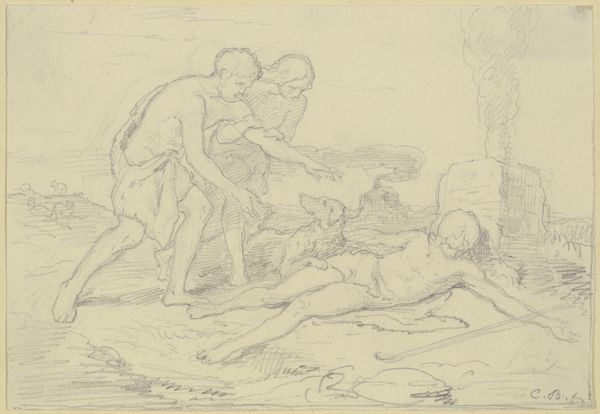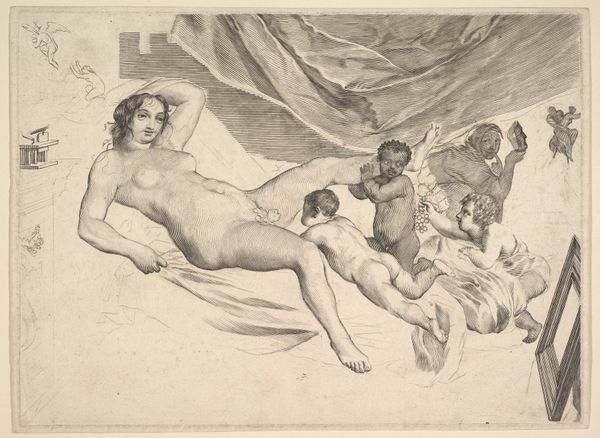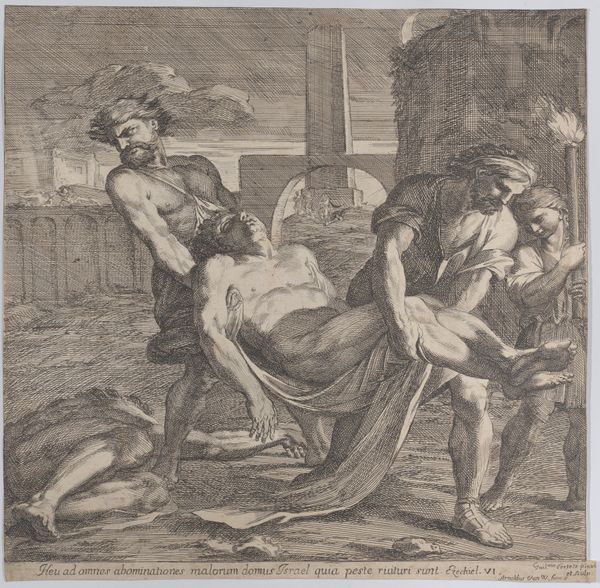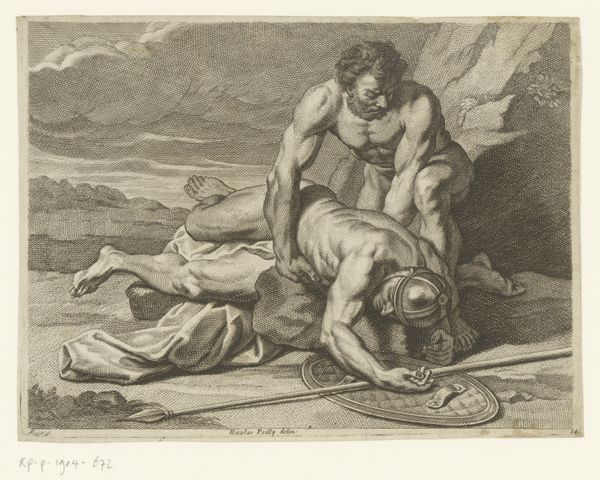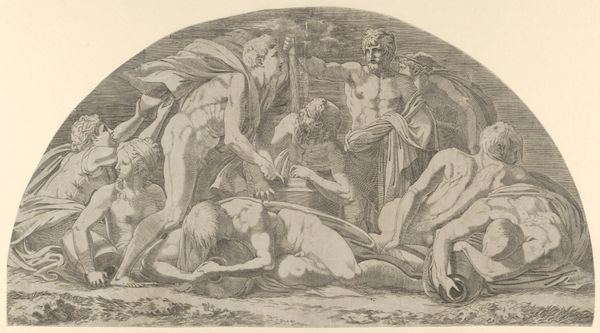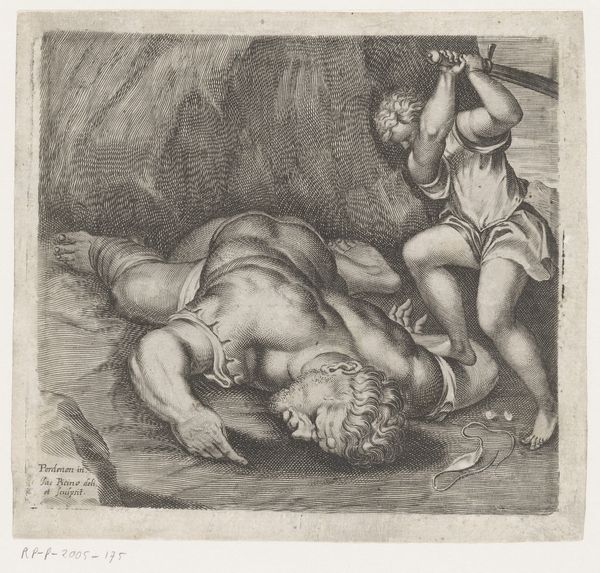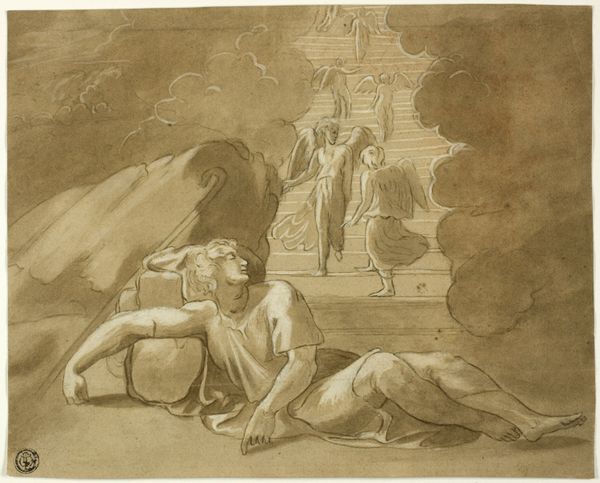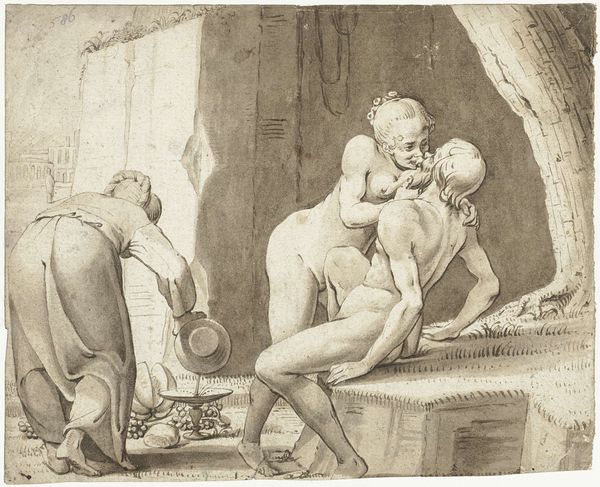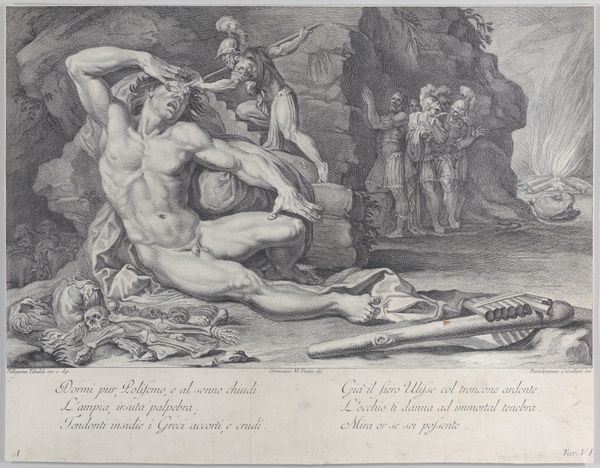
Dimensions: support: 318 x 451 mm
Copyright: CC-BY-NC-ND 4.0 DEED, Photo: Tate
Curator: The pallid figures here evoke a quiet, almost desolate stillness. It’s like glimpsing a dreamscape where the veil between worlds thins. Editor: William Blake, who was born in London in 1757, didn’t title this sepia drawing, but it’s now known as "The House of Death." Look how the figures are arranged within this modestly sized work. Curator: That wild-haired figure, pointing dramatically upwards, I see him as a sort of agitated guide, maybe ushering souls to their next destination. He's practically vibrating with a grim urgency. Editor: Note the winged figure looming above, holding what appears to be some sort of symbolic key. Blake was fascinated by symbols of passage and transformation. Curator: Yes, the key! It suggests unlocking something profound, perhaps the mysteries of existence beyond mortal understanding. It's like a final, whispered promise of transcendence. Editor: Exactly. And the slumbering figures entwined below—they’re both intimate and distanced. The moment between life and whatever comes after is so fragile, captured in ink. Curator: There’s a strange beauty here, a haunting elegance. Blake's not just depicting death, but hinting at the poetry of it. Editor: A reminder that even in the face of mortality, we can still find moments of reflection and perhaps even, a sort of peace.
Comments
tate 7 months ago
⋮
http://www.tate.org.uk/art/artworks/blake-the-house-of-death-n05192
Join the conversation
Join millions of artists and users on Artera today and experience the ultimate creative platform.
tate 7 months ago
⋮
Blake believed John Milton to be England’s greatest poet, worthy of emulation but by no means above criticism. This drawing illustrates lines from Milton’s Paradise Lost (1667), which describe a ‘Lazar-house... , wherein were laid/Numbers of all diseas’d, all maladies/... Dire was the tossing, deep the groans, despaire/Tended the sick... / And over them triumphant Death his Dart/Shook’. Blake claimed that his epic poem, Milton 1804, had been ‘recited’ to him by Milton’s spirit. In this poem Blake criticises the poet’s ideas, and Milton asks for his errors to be corrected. Gallery label, September 2004
